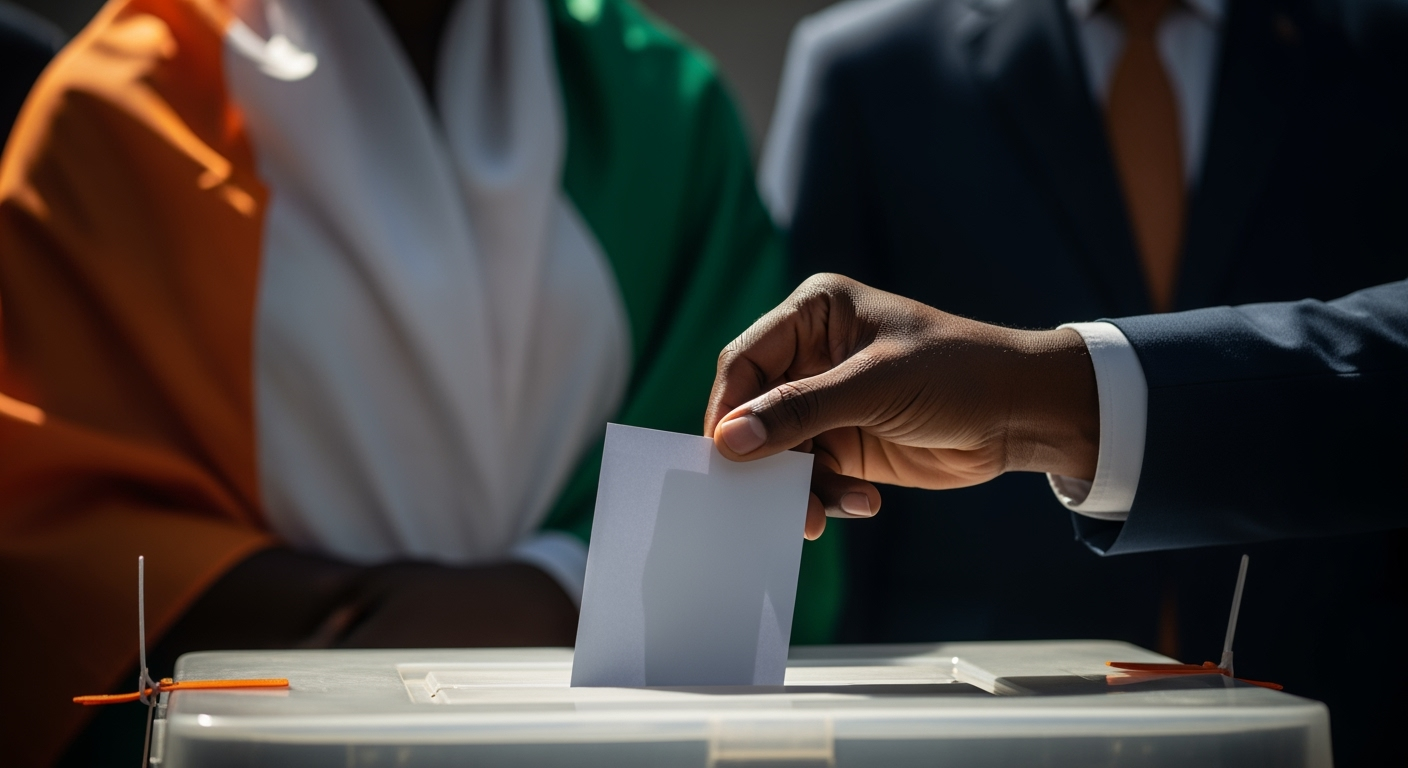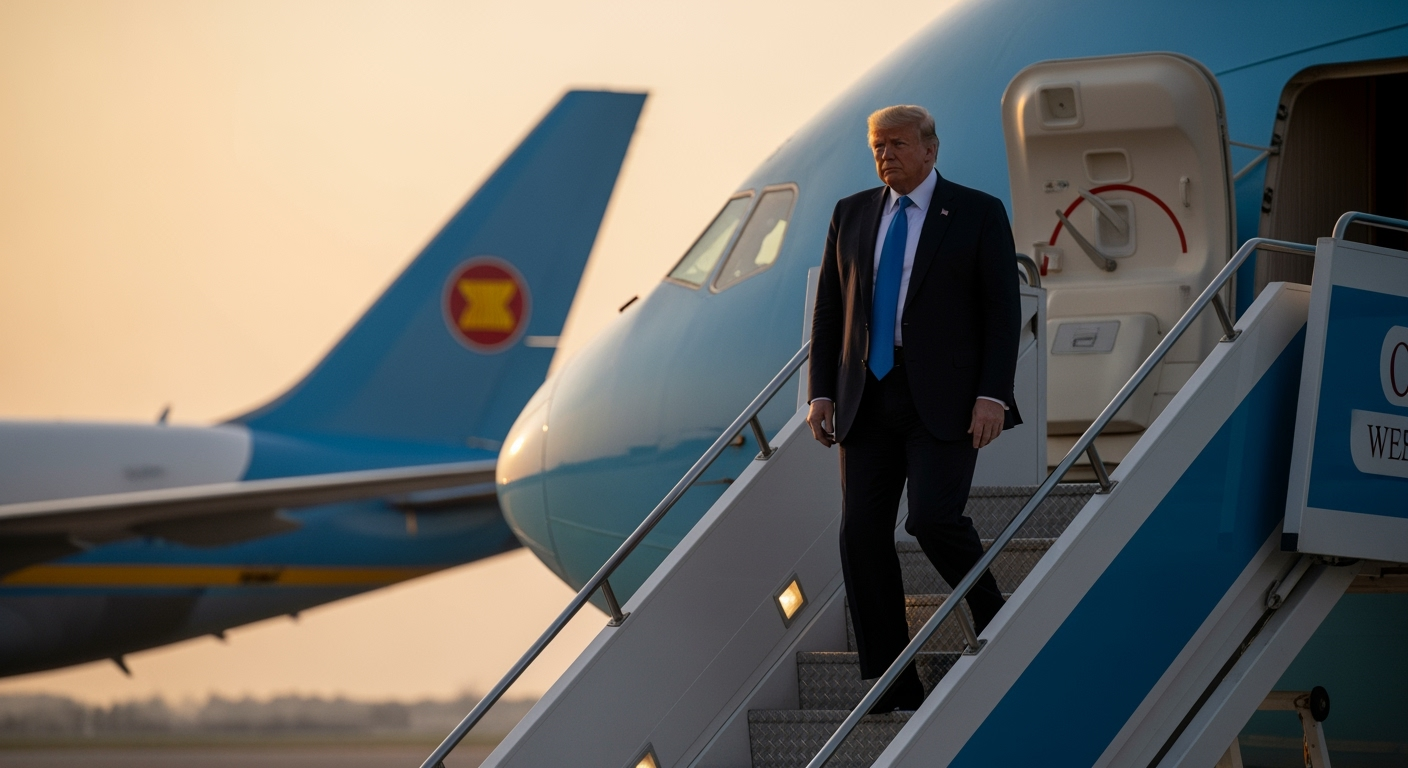Related Articles

Bolsonaro Appeals Historic 27-Year Coup Conviction, Brazil's Political Future Hangs in Balance




President Donald Trump departed Washington late Friday for a five-day diplomatic tour of Asia, his first to the region since returning to the White House, marking a critical juncture for U.S. foreign policy and economic relations. The itinerary includes stops in Malaysia, Japan, and South Korea, where major investment discussions, peace negotiations, and high-stakes talks with Chinese President Xi Jinping are slated to dominate the agenda. The visit unfolds against a backdrop of a looming U.S. government shutdown, with many federal employees facing unpaid work, injecting an additional layer of complexity into the President's international engagements.
The departure on Friday evening marks President Trump's return to the Asian diplomatic circuit, a region he has not visited since resuming office in January. This tour is notable as his first attendance at the annual Association of Southeast Asian Nations (ASEAN) summit since 2017. The ambitious five-day trip, beginning with Malaysia, followed by Japan and South Korea, aims to project American influence and address pressing regional issues. The domestic political climate, characterized by an ongoing government shutdown, places an unusual spotlight on the President's ability to maintain focus on international affairs while internal fiscal battles persist. As Mira Rapp-Hooper, a former official in the Biden administration, noted, "The high-level question on this trip is really, who does the United States stand with, and what does it stand for".
President Trump is expected to arrive in Kuala Lumpur, Malaysia, on Sunday morning to attend the ASEAN Summit, hosted by Malaysian Prime Minister Anwar Ibrahim. This gathering is poised to be a focal point for regional diplomacy, with a key event being the anticipated signing of a peace treaty between Thailand and Cambodia. The two Southeast Asian neighbors experienced border skirmishes in May, leading to a U.S.-brokered ceasefire in July. President Trump has publicly touted his role in resolving "unendable" conflicts, and presiding over this peace agreement is seen by some as an opportunity to reinforce his image as a peacemaker. However, analysts suggest his primary motivation for attending the ASEAN summit, an event he has historically shown little interest in, may be largely tied to this specific peace accord and the desire to claim credit for it. While in Malaysia, the President is also scheduled to hold bilateral talks with Prime Minister Anwar Ibrahim and potentially meet with Brazilian President Luiz Inácio Lula da Silva to discuss tariffs and regional tensions.
Following the ASEAN summit, the President's tour will pivot to Japan and South Korea, with a strong emphasis on trade and investment opportunities reportedly valued at around $900 billion. In Tokyo, President Trump is slated to meet Japan's newly-elected Prime Minister Sanae Takaichi, the country's first female leader, and visit American troops. Japan has historically been a crucial economic partner, with Takaichi expected to propose new purchases of U.S. soybeans and liquefied natural gas, continuing Japan's strategic trade partnership. The tour's final leg will take President Trump to South Korea for the Asia-Pacific Economic Cooperation (APEC) summit, where the most anticipated event is a high-stakes meeting with Chinese President Xi Jinping on October 30.
This meeting comes amidst significant economic turbulence and an entrenched trade dispute between the U.S. and China. The U.S. trade deficit with ASEAN nations tripled from $50 billion in 2017 to $169 billion in 2024, with new U.S. tariffs ranging from 10% to 40% impacting exports from countries like Vietnam. Analysts note that the global economy remains on edge due to the ongoing trade tensions, exacerbated by recent Chinese restrictions on rare earth minerals. The encounter between Trump and Xi is seen as a critical opportunity to de-escalate tensions and potentially forge a new trade deal, though some observers believe Beijing feels emboldened and holds leverage over Trump. Discussions with South Korea are also expected to focus on reducing auto tariffs and addressing the U.S. demand for a substantial Korean investment in the U.S..
The shadow of North Korea, a persistent regional security challenge, also looms over the President's tour. President Trump expressed openness to meeting with North Korean leader Kim Jong Un if an overture were made during his trip, drawing parallels to his 2019 meeting in the demilitarized zone. This stance, combined with his suggestion of potentially recognizing North Korea as a nuclear power, highlights the complex and unpredictable nature of diplomacy on the Korean Peninsula. Beyond North Korea, the tour aims to reinforce the U.S. commitment to a "free and open Indo-Pacific region," a strategic framework designed to promote economic growth, security, and partnership with independent nations. This vision is implicitly aimed at countering China's growing influence and ensuring regional stability, with U.S. officials emphasizing cooperation on issues such as maritime security in the South China Sea and efforts toward denuclearization.
The convergence of economic imperatives, geopolitical rivalries, and the pursuit of peace accords underscores the multifaceted objectives of President Trump's current Asia tour. From the intricate dynamics of the ASEAN forum to the high-stakes trade negotiations and the ever-present challenge of North Korea, the outcomes of this five-day journey are poised to significantly influence regional stability and shape the trajectory of U.S. engagement in the Indo-Pacific for years to come. With global markets and international observers keenly watching, the President's diplomatic efforts will be closely scrutinized for their ability to navigate complex challenges and deliver tangible results.